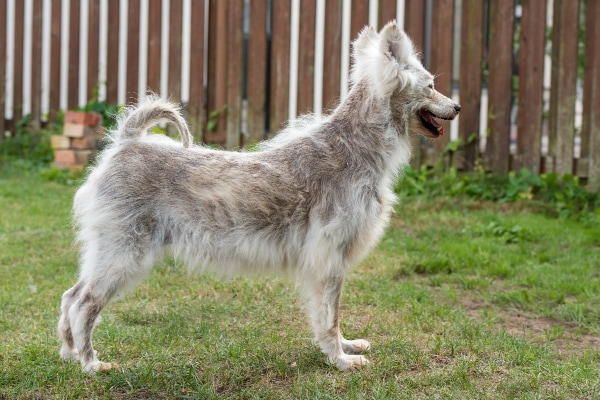Can I give my dog melatonin for hair loss?
To answer this question, let’s begin by briefly reviewing the role melatonin plays. In addition to improving sleep-wake cycles, melatonin helps regulate seasonal shedding cycles—where animals lose their winter coat in the spring and grow a thick coat in the winter.4
The mechanism by which melatonin is involved in regulating hair growth is not fully understood. However, it is believed that melatonin either works by directly stimulating the hair follicle or by stimulating other hormones within the brain that would affect fur growth.3,4

We know that melatonin levels increase with exposure to darkness. It makes sense, then, that we can see seasonal changes in systems that are affected by melatonin—such as the skin and fur—when the days get shorter and longer.
In dogs, melatonin may be helpful in managing two conditions that cause hair loss: seasonal flank alopecia and alopecia X. In both cases, the condition is considered cosmetic—the dog either has a thinner fur coat than normal or the dog has lost fur entirely. Dogs with these conditions are typically not itchy.
However, there are other diseases where hair loss can occur such as hypothyroidism in dogs and Cushing’s disease in dogs. These conditions should both be ruled out prior to relying on melatonin as a primary treatment.2
Seasonal flank alopecia is often seen in dogs in northern regions such as the upper Midwest, Northeast, and Canada. Certain breeds seem to be predisposed to this condition2, including:
It is believed that the reduced exposure to light in the winter months may play a role in hair loss.2 Melatonin has been shown to help improve hair coat in some cases, but some cases will resolve on their own during the spring/summer as the daylight hours increase.2,3 If your dog shows signs of seasonal hair loss, ask your vet if melatonin may be a good option.

With alopecia X, the cause of hair loss is still unknown. We see alopecia X more commonly in Nordic breeds3 with double coats, such as:
Although the exact cause is unknown, it is believed to be related to a hormone imbalance. This is because spaying and neutering intact dogs has been shown to cause the hair to regrow.3 In patients that are already spayed and neutered, melatonin is often the first-line treatment for alopecia X, especially considering potential side effects of melatonin are usually milder than other treatment options.
The potential uses for melatonin are many and varied. Continued research of this hormone show its utility can be surprising.
Melatonin worked wonders for my Pomeranian patient
Finally, since I like to talk about dogs and not just conditions, let’s meet a 4-year-old neutered Pomeranian named Elvis. Despite having a doting owner who adored him, Elvis looked like he’d been rescued from a grooming incident that had gone awry. He had a mane of rust-colored fur around his neck, but his body was bald. Patches of his skin had turned to a blackish leather and his tail looked like that of an opossum with mange.

We did a full work up with labs to try to get to the bottom of what was causing Elvis’s hair loss. All of his bloodwork results pointed away from the “normal” dog endocrine diseases which can cause hair loss—like Cushing’s disease in dogs and hypothyroidism—and toward a diagnosis of alopecia X.
We started Elvis on oral melatonin. I explained to his mom that we would commit to a three-month trial before making any further changes. Dogs with alopecia X reportedly demonstrate hair regrowth in 40-60% of the cases.
It took over four months until Elvis had the coat of a normal Pomeranian, but he regrew his hair! It was somewhat stunning to behold.
Is 5 mg of melatonin too much?
According to Michael Grandner, director of the Sleep and Health Research Program at the University of Arizona, “melatonin is very safe if taken in normal doses,” which is anything between 0.5 mg and 5 mg.
My Dog Ate A Melatonin Gummy – What Should I Do
Melatonin has been shown to result in partial of complete hair regrowth in 40% of animals. The dosage is variable and can be increased depending on response to therapy. Melatonin at a dose of 3mg once or twice daily has been shown to be useful but can be doubled.